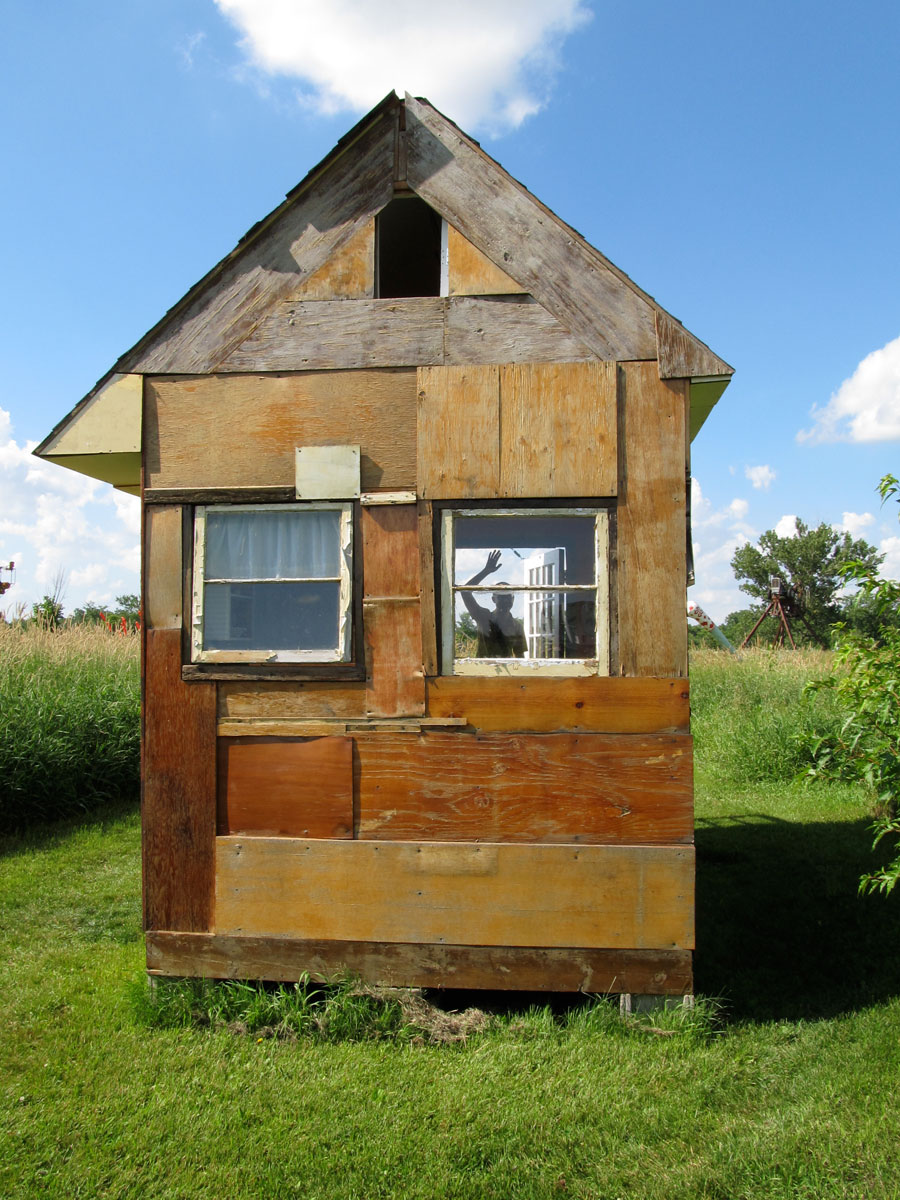The tiny house movement continues to gain momentum in the Midwest. I read an article on Lloyd Kahn's blog about Brainerd tiny houses, and the article below was in the weekend edition of the Brainerd Dispatch.
River Falls man's tiny house offers big potential
Posted:
06/23/2014 12:01:00 AM CDT
Updated:
06/23/2014 03:59:37 PM CDT
Haskins lives in what is known as a "tiny house."
He just moved into his home on wheels, located on his aunt's property a few miles west of River Falls.
"There's not as much to worry about in a tiny house," Haskins said. "In a large house, worries can build up quickly."
More after the jump:
He's not alone. Many people across the nation are choosing to downsize.
There are tiny house listings, communities and conferences across the U.S.
People are choosing to live tiny for different reasons. Some don't want to be bogged down with a mortgage. Others want a simpler life.
"A lot of the young crowd is looking to become more self-sufficient," said Dan Fisher, mortgage loan officer for Edina Realty in River Falls. "This is the direction investors are going to come back in."
Haskins bought his secondhand house for $15,000. He will pay only a few dollars a month for electricity.
The average tiny home costs $23,000, while the average full-size home costs $272,000, according to thetinylife.com, a resource for those interested in tiny homes.
Haskins found out about tiny houses while browsing the Internet. He was skeptical at first but gradually grew fonder of the idea.
"It cost less for me to buy this house than to go to a year of college," Haskins said.
Haskins' home has many of the same features as a full-size place, just tinier.
He works from home in his art studio. Pictures and sketches hang from the walls.
The house now runs on electricity. Haskins hopes to make it solar-powered.
A mini-fridge keeps his food cold and he gets most of it from the family garden, stopping at the grocery store occasionally.
The bathroom has a compost toilet and shower attached to a garden hose and portable water heater.
Fisher predicts an increase in tiny house sales. The movement has just reached the Midwest, but is popular in warmer climates and states with smaller housing, like New York.
"That's how trends start," Fisher said. "They start as a little idea that eventually takes root."
Tiny houses are only sold privately, but Fisher said he thinks they will be sold commercially soon.
Haskins has encountered a couple of challenges while adjusting to the tiny house lifestyle.
The main challenge so far has been downsizing, since he can have only a limited number of belongings in his 20-by-8-foot house.
"Every time I make a purchase, I have to think, 'Will I have somewhere to put this?' " he said.
He also said it's been hard to adjust to not having Internet. He decided to further simplify his life by not having it in the house.
"I've been weaning myself off Netflix," Haskins.
Overall, however, he enjoys his tiny house and said some friends are interested in following his new lifestyle choice.
"Living costs are going to be less than nothing," Haskins said. "With this I have the security of a living space."
More Minnesota tiny house pictures after the jump:
from tinyhouseswoon.com
 | |
| Tiny house made exclusively from found materials in Shafer, Minnesota. Photo by Debbie Koenigs. |



No comments:
Post a Comment